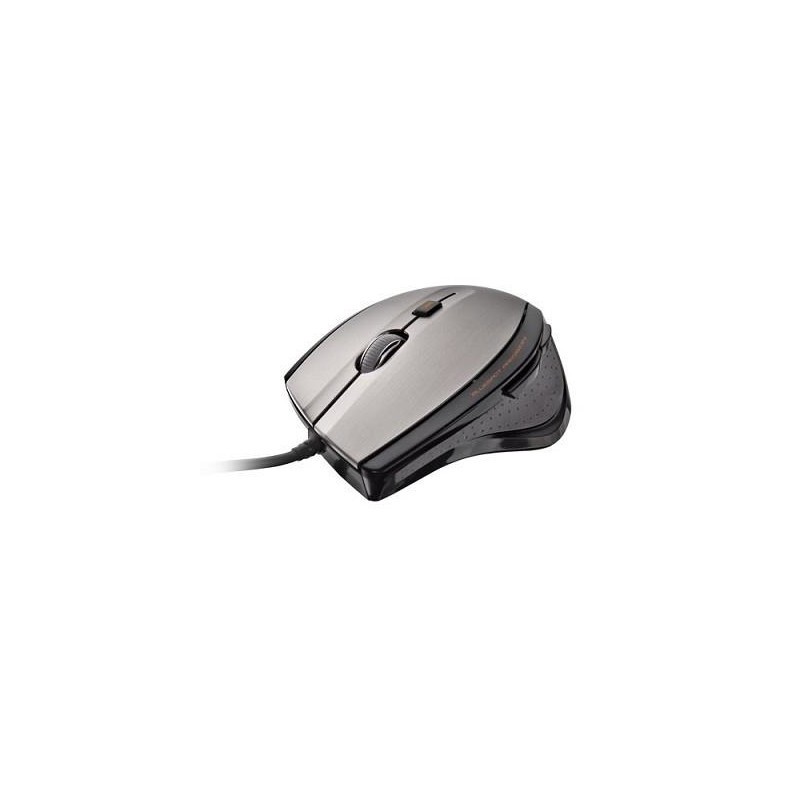
- Trust usb optical mouse driver install#
- Trust usb optical mouse driver update#
- Trust usb optical mouse driver windows 10#
- Trust usb optical mouse driver Bluetooth#
- Trust usb optical mouse driver windows#
Automatic updates could save you hours of time.
Trust usb optical mouse driver update#
If you are having trouble finding the right driver, stop searching and fix driver problems faster with the Automatic Driver Update Utility.
Trust usb optical mouse driver install#
Visit our Driver Support Page for helpful step-by-step videos Install Drivers Automatically In most cases, you will need to reboot your computer in order for the driver update to take effect.

Locate the device and model that is having the issue and double-click on it to open the Properties dialog box.Ĭlick the Update Driver button and follow the instructions.
Trust usb optical mouse driver windows#
In Windows XP, click Start -> Control Panel -> Performance and Maintenance -> System -> Hardware tab -> Device Manager button In Windows Vista, click Start -> Control Panel -> System and Maintenance -> Device Manager In Windows 7, click Start -> Control Panel -> Hardware and Sound -> Device Manager In Windows 8, swipe up from the bottom, or right-click anywhere on the desktop and choose "All Apps" -> swipe or scroll right and choose "Control Panel" (under Windows System section) -> Hardware and Sound -> Device Manager
Trust usb optical mouse driver windows 10#
In Windows 11, Windows 10 & Windows 8.1, right-click the Start menu and select Device Manager It allows you to see all of the devices recognized by your system, and the drivers associated with them. To install a driver in Windows, you will need to use a built-in utility called Device Manager.
Trust usb optical mouse driver Bluetooth#
Gamers should choose a Bluetooth mouse above 500 Hz, but if you are using the mouse for anything else, the polling rate really isn't a consideration.Once you download your new driver, then you need to install it. The rate reflects the number of times per second the mouse is communicating that information to the computer.

This is the mouse's way of telling the computer its position.

Polling rate is another specification that you will notice when reviewing a wireless mouse's details. However, if you are looking for a new mouse for the office, you might want to consider a noiseless mouse so your incessant clicking doesn't annoy your coworkers. If you will be using this mouse at home and mouse clicks won't bother you, that is great. In addition, you should think about the noise factor. You don't want to spend your days using a mouse that is uncomfortable for you and causes wrist or hand issues. But no matter what type of Bluetooth mouse you choose, you should consider ergonomics. However, if you choose a Bluetooth trackball or trackpad, the laser or optical debate won't come into play. Furthermore, laser mice can be more precise and responsive with a higher DPI rating than an optical mouse. Laser mice, on the other hand, can be used on a variety of different surfaces as it does not reflect off the surface. An optical mouse requires a flat, opaque surface. The main difference is that a laser mouse tracks movement with a laser, while an optical mouse reflects off the surface it's on with an LED. These are two of the most common types of mice. The first choice that you need to make is whether you want an optical or laser Bluetooth mouse. Designers might want an ergonomic laser mouse, while gamers want adjustable DPI settings on their mouse to increase the sensitivity and enable better twitch reflexes. Whether you are a writer, gamer, designer or just general computer user, the specifications and design of the mouse will need to fit your needs. A USB-connected mouse will be instant, whereas a Bluetooth can take a few seconds to establish connection with the computer.īefore going out and buying the first Bluetooth-enabled wireless mouse you see, you need to consider how you would use it. The second is reconnection speed after turning on your computer. The first is that the connection requires a few extra steps from the "plug and play" functionality of a wireless mouse with a USB dongle. There are only two slight downsides to choosing a Bluetooth mouse. This convenience only gets better because battery life for Bluetooth mice usually runs a year or two. Also, a Bluetooth mouse is easily moved from device to device if you have multiple computers but only want to buy and use one mouse. You don't need to have an available USB port to use it, just a computer with a Bluetooth receiver. a Bluetooth mouse is that RF mice need a USB dongle to connect, while a Bluetooth mouse uses a transmitter that communicates and connects with the Bluetooth receiver built into your computer.Ī Bluetooth mouse is the optimal choice if unlimited convenience is your goal. The basic difference between a wireless (RF) mouse vs. A wireless mouse comes in two varieties: radio-frequency (RF) and Bluetooth.


 0 kommentar(er)
0 kommentar(er)
